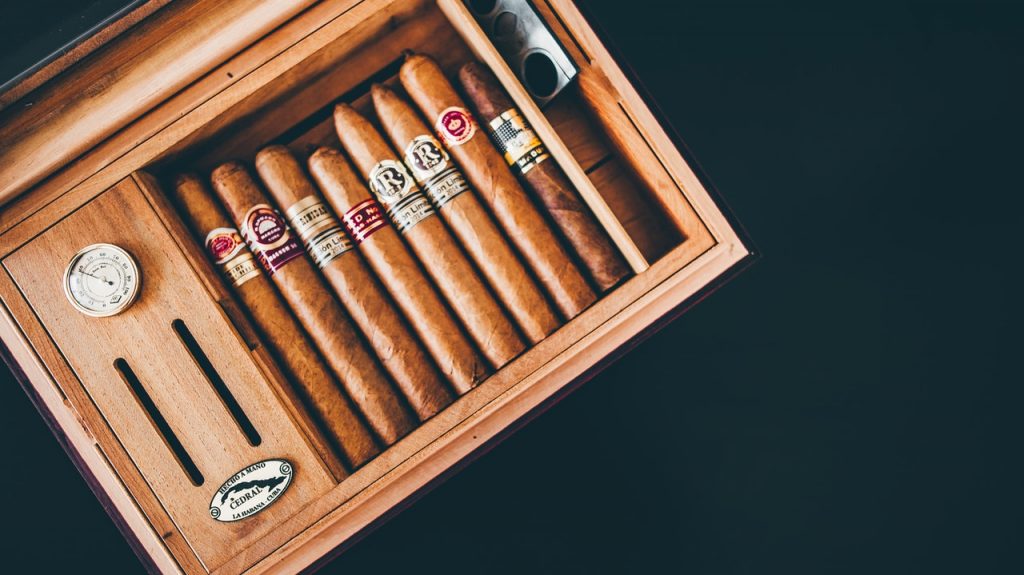History Of The Cuban Cigar

A cigar is a wand for thinkers to show wisdom, a weapon for revolutionaries to wield passion, and a ladder for writers to obtain inspiration. Cigars are always the enemy of shallowness, anxiety, and boredom. Smoking cigars always gives people a sense of elegance, nobility, and mystery. Nowadays, this fashion is still prevailing.
The Smokey Past Of Cigars
In 1492, when two crew members of Columbus landed in Cuba, they smoked tobacco for the first time, the first two cigar smokers in Europe. Columbus did not find the gold of their dreams in the New World, but they found a more powerful symbol-a cigar, and thus brought this god-given eleventh finger to the world.
The Eleventh Finger: Cigar
If you can’t let cigars enter your blood, influence your nerves, penetrate your soul, and then change your personality, behaviour, and even survival, you are still smoking the fur and form of cigars. Only when cigars start to change your life form you can truly step into the hall of cigars.
The Restrictions On Cuban Cigars
On February 7, 1962, the former U.S. President Kennedy imposed an embargo on Cuba to sanction the Fidel Castro regime, and the cigar problem also emerged. Not only did American citizens lose the opportunity to buy the best cigars at the time, but did you know that Cuban cigars also lost the American market? Until 2006, the law still prohibited American citizens from buying or importing Cuban cigars, so high-priced smuggled goods and rampant counterfeit goods still flooded the American cigar market.
Due to the popularity of personal computers and the Internet, it is now easy for American citizens to buy cigars from Cuba on Canadian websites. However, consumers who purchase cigars through this way need to bear the risk of being deceived, such as buying counterfeit goods or failing to receive the goods. The embargo was relaxed in January 2015, which included provisions that allowed the import of alcohol and tobacco worth up to US$100 to each passenger, allowing the first legal import since the ban.
Origin Of Tobacco: Cuba
Cuba is the place where Europeans discovered tobacco, and it is still the place where delicate tobacco leaves and famous brand cigars are produced. The entire island of Cuba itself is a natural moisturizing tobacco jar, and the combination of soil, sunlight, wind, and water is used to grow tobacco in time. Cuban cigars are artistic treasures formed by the sun, dirt, and cigarette art over five centuries. Europeans believe that only tobacco and cigars produced in Cuba are the best. So beginning in 1510, Cuba sold cigars to Europe in bulk. Havana cigars represent the highest level of Cuban cigars and become synonymous with Cuban cigars.
Cuban Cigar Fever In The 90s
In the mid to late 1990s, numerous cultural phenomena in the United States triggered cigar fever. At that time, luxurious dinner parties were popular in big cities across the United States. Cigars were famous among social celebrities, radio and television talk show hosts, politicians, blue-collar workers, and even many women.
History Of Cuban Cigar Brands
● Monte
This brand originated from Alonso Menendez. In 1935, Montecristo created and with a unique logo: Six rapiers woven into a triangle with an iris in the middle. Montecristo Cigar was very successful and it didn’t take long to acquire the Upman factory and brand. In just 20 years, Montecristo has become an internationally renowned brand.
After the revolution, all the assets of Cubamont were nationalized. Menendez went to the Canary Islands to continue producing Monte brand cigars. By 2000, in a series of mergers, the cigar brand eventually belonged to Altadis.
● Upman
Upmann was founded in 1844 by the banker and financier Herma Upmann. Upman cigars were originally customized for bank customers. They were used as gifts for important customers of the bank. Unexpectedly, they were trendy. By the turn of the century, Upman cigars became very popular. At the peak, more than 200 different sizes were produced.
Annual sales of about 25 million cigars and sales continue to grow. It was not until 1922 that the bank established by Upman in Cuba went bankrupt, which was implicated in Upmann cigars. Eventually, the founder of the Upman brand Hualuo Menendez. Menendez brought the Upman and Monte brands to the Canary Islands.
● Romeo And Juliet
Inocencio Alvarez and Jose Garcia founded the Romeo and Juliet brand in Cuba in 1875. It was not until Rodriguez took over that the brand flourished. By 1910, the Romeo factory produced more than 20 million cigars annually, most of which were sold to the United States and the United Kingdom. Did you ever try Romeo and Juliet cigars in your younger years and drawn a long puff? If not, you should.
● Trinidad
Diego Trinidad founded the Trinidad cigar brand in 1905. At that time, Diego Trinidad was engaged in the freight business. He found that the demand for transporting tobacco was great. At the same time, he saw that the cigar industry was up-and-coming. It became the Trinidad Tobacco Company. His son Diego Trinidad Jr. took over the family business in 1920, renamed TTT Trinidad in 1958, and was confiscated.






